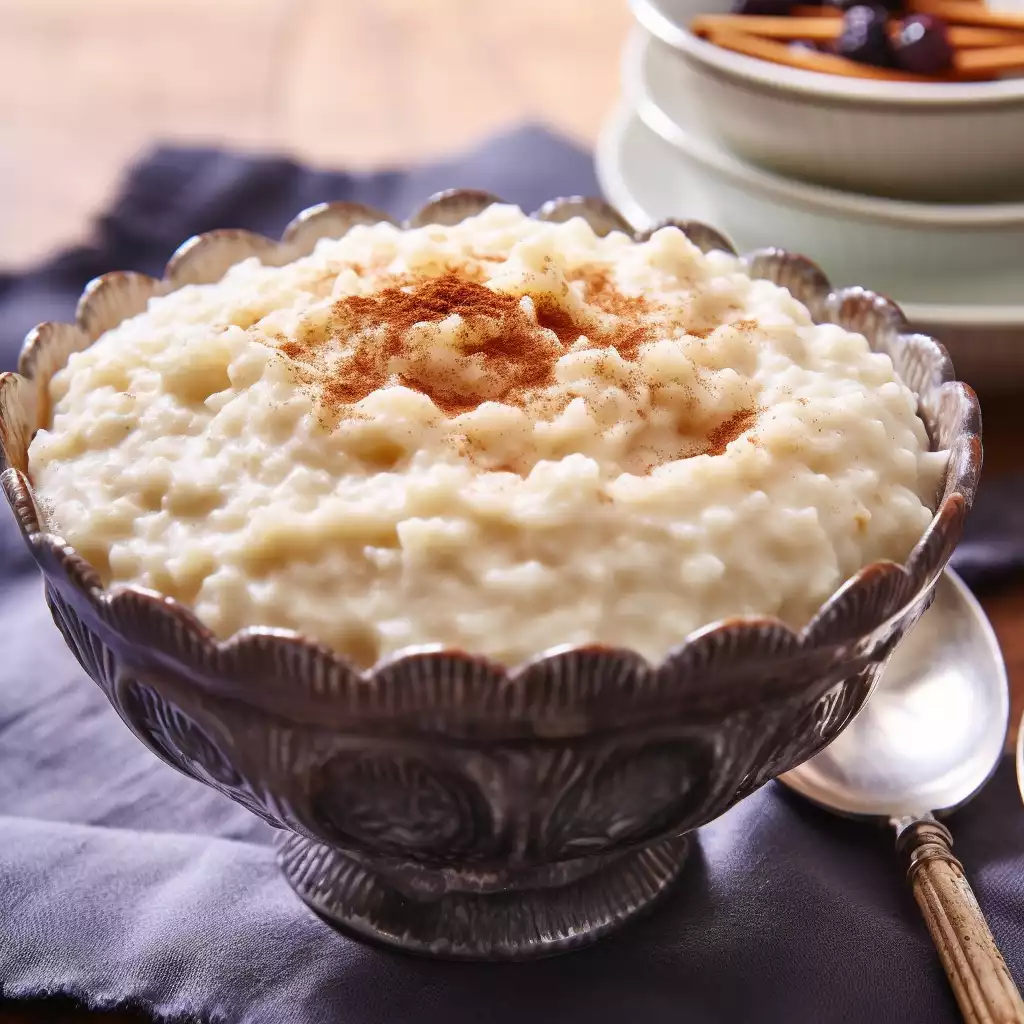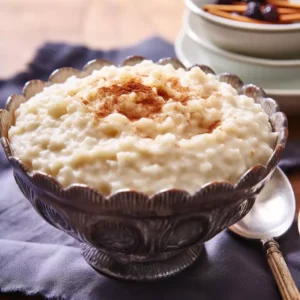
Rice pudding, a timeless classic in the world of desserts, offers a comforting sweetness that warms both heart and soul. Originating from various cultures around the globe, this creamy delight has found its way into countless kitchens, each adding its own unique touch to the recipe.
Despite its seemingly sophisticated nature, crafting a delectable rice pudding is simpler than you might think, making it a perfect venture for novice cooks eager to impress their taste buds.
The heart of this recipe lies in the harmonious combination of humble ingredients – Arborio rice, sugar, milk, and a touch of vanilla. Each element plays a crucial role in transforming this ordinary mix into a velvety masterpiece.
Despite its elegance, mastering the art of rice pudding doesn’t require culinary prowess. With a few simple steps and a bit of patience, you can create a dessert that embodies comfort and indulgence in every bite.
So, whether you’re craving a nostalgic treat or seeking to explore the joys of homemade desserts, rice pudding promises to be a delightful journey worth savoring.
Expert Tip: For a dairy-free alternative, you can use coconut milk or almond milk instead of cow’s milk. Just keep in mind that this may alter the flavor and texture of the pudding slightly.
Arborio Rice: Arborio rice is known for its starchy composition that lends a creamy texture to the pudding. As it cooks, Arborio rice absorbs the milk, creating a luxurious mouthfeel that is essential to the dish’s overall appeal.
Sugar: Sugar serves as the sweetener in this recipe, balancing the flavors and enhancing the natural sweetness of the milk and vanilla. It caramelizes slightly during cooking, adding depth and richness to the pudding’s taste profile.
Milk: Milk forms the liquid base of the pudding, providing richness and creaminess. As the rice simmers in the milk, it absorbs the dairy goodness, resulting in a smooth and velvety consistency that is synonymous with a classic rice pudding.
Vanilla: Vanilla adds a delicate aroma and flavor to the pudding, infusing it with a subtle sweetness and depth. By scraping the seeds from the vanilla pod and simmering them with the rice and milk, you unlock the essence of this beloved spice, elevating the dessert to a whole new level of indulgence.
Salt: A pinch of salt enhances the overall flavor profile of the pudding, balancing the sweetness and adding a subtle depth of flavor. It helps to bring out the natural richness of the ingredients, ensuring a harmonious blend of tastes with each spoonful.
Cinnamon Powder (Optional, garnish): For those who crave an extra layer of warmth and spice, cinnamon powder serves as the perfect finishing touch. Sprinkled on top of the pudding before serving, it adds a hint of aromatic sweetness, elevating both the flavor and presentation of the dish.
Expert Tip: To prevent the rice from sticking to the bottom of the saucepan, stir the mixture frequently, especially towards the end of the cooking time.
Expert Tip: Rinse the Arborio rice under cold water before cooking to remove excess starch, which helps prevent the pudding from becoming too thick.
The cooking time for rice pudding typically ranges from 40 to 45 minutes. It’s essential to simmer the mixture over low heat, stirring occasionally, until the rice is tender and the pudding reaches a creamy consistency.
While Arborio rice is traditionally used for rice pudding due to its starchy nature, you can experiment with other short-grain rice varieties such as sushi rice or pudding rice. However, keep in mind that the texture and cooking time may vary slightly.
Using a vanilla pod adds a rich depth of flavor to the pudding, but you can substitute it with vanilla extract if needed. Simply add a teaspoon of vanilla extract to the milk mixture instead of using a vanilla pod.
Yes, rice pudding can be made ahead of time and stored in the refrigerator for up to 3-4 days. When reheating, add a splash of milk to the pudding to restore its creamy consistency, and heat gently on the stove or in the microwave.
Absolutely! Feel free to adjust the amount of sugar according to your preference for sweetness. You can start with less sugar and add more gradually, tasting as you go until you achieve the desired level of sweetness.
Here are some more recipes for you to enjoy! If you my recipes don’t forget to rate and leave a comment.
If you have any recipe suggestions, please do not hesitate to ask me. A great way to stay in contact with me is through Instagram, Facebook, Twitter and YouTube. Don’t forget to tag me @CookwithNabeela in your recipe photos!

Subscribe now to receive my latest recipes directly in your inbox. Stay up-to-date and never miss out!

I love to cook! I want to share with you my favourite, delicious family-friendly recipes. I want to inspire you to create fantastic food for your family every day.
Add your first comment to this post